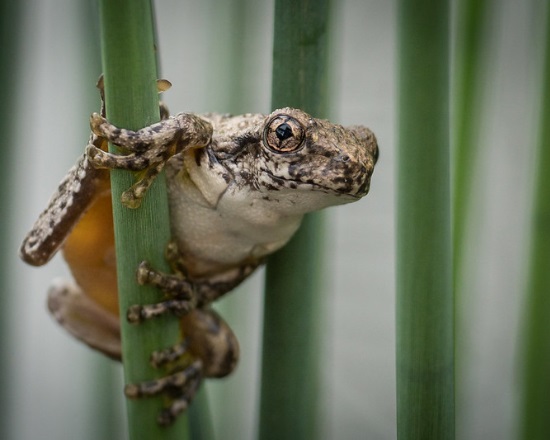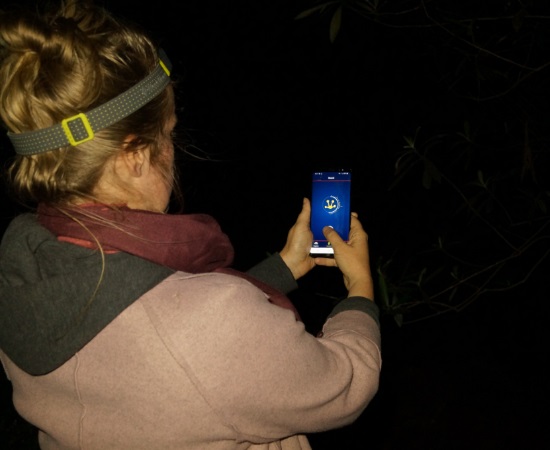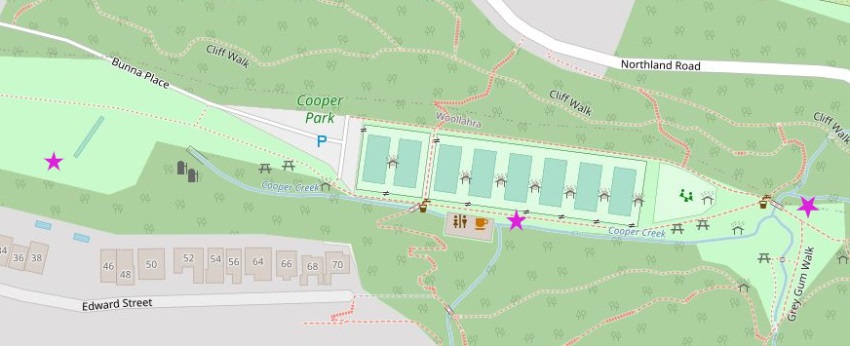Frogs of Cooper Park
Strange sounds in the night
Every frog makes a distinct call and these sounds are one of the most reliable ways to identify frogs living in our area. Importantly, you’re not likely to hear our local frogs croaking but more likely to hear calls that go: bok, bok, bok…, brrrrrrr, …, crick, crick, crick… or erk..ek..erk.

Peron's Tree Frog makes a cackling laugh, a rolling ‘brrrrrrrr’. (Image: Paul Balfe)
We recently met up with Nadiah Roslan from the Australian Museum's Frog ID project and asked her to explain more about the frogs we’re most likely to hear calling in Cooper Park, where to search for them and how to get started with Frog ID.
You can use the information below to join the Museum's Frog ID citizen science project and head out on your own adventure.
When is the best time to search for frogs?
November is a great month to search for frogs. You’re more likely to hear frogs after rain and when the temperature is warm because this is when most frogs find it the best time for breeding. If possible plan to head out around dusk as frogs are most active and vocal at night.
Why do frogs call?
When you hear a frog calling it is the male calling to the female that he’s found a good place for laying eggs.
How many species have you found in Cooper Park?
We’ve recorded four frog species in and around the creek in Cooper Park. These include the Peron’s Tree Frog, Green Stream Frog, Striped Marsh Frog and Common Eastern Froglet.
Are the different species found in the same area?
The frogs are usually quite close to the creek here but each frog prefers slightly different conditions. For example we’ve recorded the Peron’s Tree Frog down near the trees behind the cricket oval, the Green Stream Frog in the slow-flowing water just next to the café and the Striped Marsh Frog and Common Eastern Froglet in the still pond just across from the first bridge.
How can we get involved in FrogID?
Download the FrogID app on your smart phone, then register your details and start recording frogs at your favourite location. You can record frogs anywhere in Australia and our scientists will listen to your recording and identify the frogs you’ve found. You can even test your own frog call identification skills! The recording collected helps us to better understand and protect frogs.
How can we listen to the calls each frog makes?
The FrogID website and App have more information on all the frogs around Australia including recordings of their calls. The FrogID App the most up to date field guide on Australia’s frogs!

More about our Cooper Park Frogs
These frogs can be found in trees and on the ground and may rest in tree hollows during the day. They can be found in backyards backyards to open woodland and can grow up to seven centimetres long. The male often calls from high up in a tree.
- Listen out for: a cackling laughter; a loud, rolling ‘brrrrrrrr’.
- Look for: The grey-brown colour can change to provide camouflage in response to light, temperature and moisture. They have green flecks and bright yellow and black markings on the inner thighs.
These frogs are mainly found in vegetation around slow flowing creeks. They can grow to up to four centimetres long. This species is quite sensitive to pollution and tend to be absent in polluted urban creeks.
- Listen out for: a squeaky erk..ek..erk, like a child’s squeaky toy.
- Look for: Green body, orange-red armpits and thighs with a distinct dark and light line down from the snout, over the eye and toward the ear.
This frog is one of the larger and more common frogs species found in our area, growing to over seven centimetres long. The females lay their eggs in a floating foam nest that they whip up with their feet.
- Listen out for: a repeated bok… bok… bok… that sounds like leaky tap or a wet tennis ball being hit.
- Look for: Dark and light stripes down back
This tiny ground frog is only about two centimetres long and has a loud call. It is very common around Sydney and can be found in diverse habitats including beneath rocks and vegetation at the edge of creeks.
- Listen out for: a repeated chirping crick, crick, crick, crick, crick.
- Look for: small elongated body with variable brown and dark markings, often with stripes.
Where to listen and look for frogs in Cooper Park

The pink stars mark three locations in Cooper Park noted in this article as good places to hear frogs.
More information